- NEW DVD Series – Stone Setting with Bezels
- Tube Set Charm by Kim St. Jean
- Prong Basket Pendant by Kim St. Jean
- NEW DVD Series – Stone Setting with Cold Connections
- New DVD Series – Stone Setting with Wire
- NEW DVD Series: Introduction to Stone Setting by Kim St. Jean
- Featured Tool: Bracelet Bending Plier
- NEW Dvd by Eva Sherman
- Fun, Fast Fold Forming DVD Series
- Double Band Ear Cuff from Alex Simkin
Jewelry Making Tool Time – Measuring Tools
I want to talk to you today about size. Size matters, right? Right–and especially in wire jewelry making.
Let me tell you—I’m naturally impatient, but I’ve learned that I have to measure everything when I make jewelry. Have you ever made a bracelet, aiming for 7 inches, and it turned out just big enough for a child’s wrist? I finally learned that taking my time and using good, accurate tools saves me time in the long run, and now I don’t have to re-make pieces as often!
A good jeweler has a multitude of measurements to keep in mind when beginning a wire sculpture piece: What size are my stones? How thick is my wire? How big do I need to make this piece, and how long should I cut the wire?
I’ve got several answers for those questions below.
Stone Size
First, how big is your stone? Many people buy stones online or at trade shows where the measurements are guaranteed to be a standard size. However, some lapidaries hand-cut their stones in unique sizes, which might throw you off, or you may find yourself with a slightly smaller stone due to unscrupulous dealers. After all, are you going to measure every stone before you buy it? How would you, anyway?
an electronic caliper
Well, to measure a stone, we use calipers. We have plastic, brass, stainless steel, and electronic calipers for measuring gemstones and beads. These calipers will give you an accurate measurement of the size of a cabochon, gem, or bead.
Ring Size
In Dale’s ring series, she showed us how to use a ring sizer. We have both plastic and metal ring sizers for easy finger measuring. We do recommend the metal sizer for its durability, but if you’ve had someone walk off with a sizer before, an inexpensive plastic sizer might be a good idea in addition to a sturdy metal set.
a metal ring sizing set
As Dale mentioned, it’s always a good idea to check the size of the ring sizer on your ring mandrel. Although we always look for the best quality products, the fact is, a size 6 on your ring sizer may not exactly match a 6 on a ring mandrel—and do you want to make a ring for a customer, or a mandrel?! Always try for a good measurement with a ring sizer—and you can usually go a half size smaller than what size your client thinks she is, especially if her fingers tend to shrink—and then drop that size on your mandrel, and memorize where it falls so you can make the ring to fit her finger perfectly.
Mandrels
Speaking of mandrels, we’ve got those too! We have both smooth telescoping mandrels and step mandrels for jump rings, rings, bracelets, and necklaces. Every wire jewelry artist should have a ring mandrel, since rings sell so well at shows and you really need to be able to hit an accurate size with your wire wrap techniques. We have both hard wood and metal mandrels; we don’t recommend plastic mandrels, since they need to withstand metal being hammered against them!
a metal mandrel
You can also check out our Tips section for ways to make your own mandrels and calipers using household materials like cardboard, TV antennas, and PVC piping (if you don’t have some of these materials, your husband or neighbor probably does).
Wire Size
Now, as far as wire gauge, we know that the higher the gauge number, the thinner the wire. The lower the gauge number, the thicker the wire. I try to keep my wire organized, but you know me—impatient and easily distracted, and sometimes my wire gets mixed up, and I have to judge by feel what size it is. Say your labels fell off your wire, or you’re sifting through your scrap box, or maybe a friend dropped some wire off at your house. Well that was nice of her—but what gauge is it? One of our tips recommends saving scraps of wire that you know the gauge of, and gluing them to cardboard or posterboard for quick reference. That’s one idea, but with 11 common gauges to choose from, that might take some time! That’s why we stock machined metal wire gauges.
a metal wire gauge
These gauges are circular and measure all sizes of wire, with cutouts for both round and half-round, as well as square wire. With a wire gauge, you’ll always know exactly what size wire you’re using! Please note, all our gauges are sold and labeled according to the American Wire Gauge (AWG) system. If you live outside the US, you might also see wire sold according to the British Standard Wire Gauge (SWG or BSG) system.
The Old Standby—The Ruler
a metal ruler
And of course, you can never go wrong with a basic ruler. We have metal rulers in both 6 and 12 inches. I absolutely love metal rulers—not only are they great for measuring and don’t slip around with the cork backing, but they’re also great for cutting paper with an X-acto blade for scrapbooking, making cards, and cutting out home-printed business cards. I use my rulers in wire jewelry making for measuring how long to cut wire, as well as to help me center stones and make displays.
Well, I hope that some of this information about measuring tools for wire jewelry making helps you! And even if you’re a seasoned pro and already knew this, I hope it inspired some organizing or measuring ideas! Make sure to check out our jewelry making tools for all your measuring needs.
Wishing you a good day and good weather,
Rose Marion





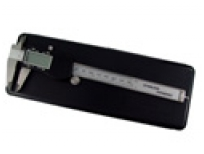
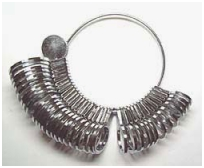
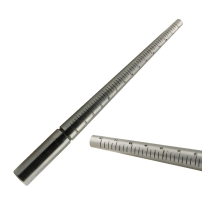
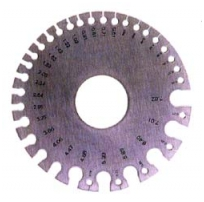

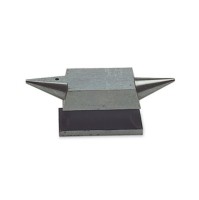
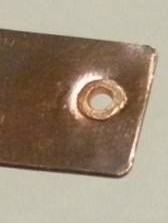
















Pingback: dropjack.com
Pingback: pligg.com
Pingback: pligg.com
Pingback: pligg.com
Pingback: pligg.com
Pingback: Kwoff.com
Pingback: ticklink.com
Pingback: indofeed.com
Kenna
November 7, 2014 at 8:22 am
I bought a wire gauge which did not come with instructions. How does one use it for different types of wire? Thank-you and love the tips.
Jan
November 29, 2014 at 9:21 am
Thank you for all the information you have provided this year. Very informative post.